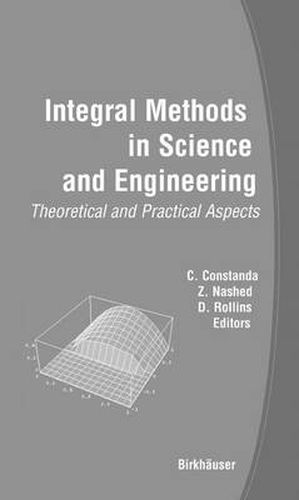Readings Newsletter
Become a Readings Member to make your shopping experience even easier.
Sign in or sign up for free!
You’re not far away from qualifying for FREE standard shipping within Australia
You’ve qualified for FREE standard shipping within Australia
The cart is loading…






This title is printed to order. This book may have been self-published. If so, we cannot guarantee the quality of the content. In the main most books will have gone through the editing process however some may not. We therefore suggest that you be aware of this before ordering this book. If in doubt check either the author or publisher’s details as we are unable to accept any returns unless they are faulty. Please contact us if you have any questions.
The quantitative and qualitative study of the physical world makes use of many mathematical models governed by a great diversity of ordinary, partial differential, integral, and integro-differential equations. An essential step in such investigations is the solution of these types of equations, which sometimes can be performed analytically, and some other times only numerically. This edited, self-contained volume presents a series of state-of-the-art analytic and numerical methods of solution constructed for important problems arising in science and engineering, all based on the powerful operation of (exact or approximate) integration.The book, consisting of 27 selected chapters presented by well-known specialists in the field, is an outgrowth of the Eighth International Conference on Integral Methods in Science and Engineering, held August 2-4, 2004. Contributors cover a wide variety of topics, from the theoretical development of boundary integral methods to the application of integration-based analytic and numerical techniques that include integral equations, finite and boundary elements, conservation laws, hybrid approaches, and other procedures. The volume can be used as a reference guide and a practical resource. It is suitable for researchers and practitioners in applied mathematics, physics, and mechanical and electrical engineering, and to graduate students in these disciplines.
$9.00 standard shipping within Australia
FREE standard shipping within Australia for orders over $100.00
Express & International shipping calculated at checkout
This title is printed to order. This book may have been self-published. If so, we cannot guarantee the quality of the content. In the main most books will have gone through the editing process however some may not. We therefore suggest that you be aware of this before ordering this book. If in doubt check either the author or publisher’s details as we are unable to accept any returns unless they are faulty. Please contact us if you have any questions.
The quantitative and qualitative study of the physical world makes use of many mathematical models governed by a great diversity of ordinary, partial differential, integral, and integro-differential equations. An essential step in such investigations is the solution of these types of equations, which sometimes can be performed analytically, and some other times only numerically. This edited, self-contained volume presents a series of state-of-the-art analytic and numerical methods of solution constructed for important problems arising in science and engineering, all based on the powerful operation of (exact or approximate) integration.The book, consisting of 27 selected chapters presented by well-known specialists in the field, is an outgrowth of the Eighth International Conference on Integral Methods in Science and Engineering, held August 2-4, 2004. Contributors cover a wide variety of topics, from the theoretical development of boundary integral methods to the application of integration-based analytic and numerical techniques that include integral equations, finite and boundary elements, conservation laws, hybrid approaches, and other procedures. The volume can be used as a reference guide and a practical resource. It is suitable for researchers and practitioners in applied mathematics, physics, and mechanical and electrical engineering, and to graduate students in these disciplines.